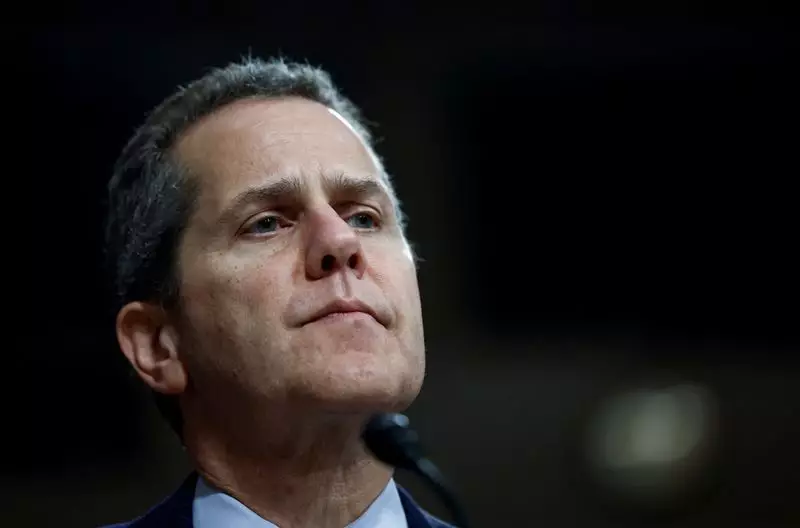The recent announcement regarding Michael Barr’s resignation from his role as the Federal Reserve’s vice chair for supervision has stirred considerable discussions in financial and political circles. Effective February 28, Barr’s decision to exit before the end of his term marks a significant turning point that opens the door for a new regulatory landscape under the upcoming administration of President-elect Donald Trump. This article delves into the implications of Barr’s departure and the potential shifts in regulatory policy that could arise as a result.
Barr’s announcement came just weeks ahead of Trump’s inauguration, allowing the incoming president to appoint a successor who aligns more closely with his administration’s pro-business agenda. Barr, who was appointed by President Joe Biden, had been a strong advocate for tighter banking regulations and oversight, especially concerning larger financial institutions. Given that his term was not set to conclude until July 2026, his premature departure suggests a strategic decision to avoid a contentious battle over his position, one that could have detracted from the Federal Reserve’s primary mission of maintaining stable monetary policy.
The potential for conflict was evident; Barr had reportedly sought legal advice in anticipation of a possible removal from his position. The political maneuvering behind the scenes indicated that Trump’s team was exploring ways to reshape the Federal Reserve’s oversight. By resigning voluntarily, Barr has effectively sidestepped what could have been a politically charged situation, which could have distracted from the Fed’s objectives.
Shifts in Regulatory Leadership and Potential Outcomes
With Barr’s exit, the pathway is clear for Trump to appoint new leadership that could lead to a shift away from the more stringent regulatory framework Barr had championed. However, it’s essential to consider the implications of this transition. While Trump will have the opportunity to install regulators sympathetic to his policies, Barr’s continued presence on the Fed’s Board of Governors means that the Democratic majority in the institution will persist until 2026. This limits Trump’s ability to entirely overhaul the regulatory environment in the short term.
Experts have pointed out that the transition of power may not yield immediate results in terms of deregulation. Jaret Seiberg, a managing director at TD Cowen, suggested that new appointments will require confirmation processes, which could delay any significant policy shifts. The context of regulatory reform requires careful navigation, particularly in an environment where the financial sector has demonstrated resilience amid regulatory pressures.
The announcement of Barr’s resignation sparked an immediate positive response in financial markets, with shares of major banks experiencing notable increases. Major financial institutions, including Citigroup and Bank of America, saw their stock prices surge, reflecting market optimism regarding the prospect of a more favorable regulatory environment. Such immediate market reactions indicate the significant influence that regulatory leadership exerts on investor confidence and the operational climate within the banking industry.
However, it is imperative to view this surge in stock prices through a nuanced lens. While increased profits can be anticipated from a deregulatory approach, it also introduces potential risks. A less regulated financial environment could lead to increased risk-taking behavior among banks, potentially setting the stage for economic instability reminiscent of past financial crises.
The Implications for Federal Reserve Independence
Barr’s resignation also raises questions about the independence of the Federal Reserve, an institution often regarded as a cornerstone of U.S. economic stability. The prospect of increased political influence over the Fed under Trump’s administration has prompted concerns among market analysts and policymakers alike. The importance of the Fed’s autonomy is underscored by the necessity for impartial monetary policy decisions, free from political pressures that might skew economic stability.
As the political climate evolves, the balance between regulatory oversight and financial market freedom will become increasingly crucial. Although there is potential for a shift in the regulatory focus towards easing restrictions, it must be balanced against the long-term health of the financial system and broader economy.
Michael Barr’s departure from the Federal Reserve signifies not only a personal career shift but also potential watershed moments for U.S. financial regulation and economic policy. As the Trump administration sets its sights on reshaping the regulatory framework, the dual challenge will be to stimulate economic growth while safeguarding against the risks of systemic instability. The convergence of political agendas, market reactions, and regulatory oversight will undoubtedly shape the narrative of American finance in the coming years—one that demands vigilance and thoughtful engagement from all stakeholders involved.

